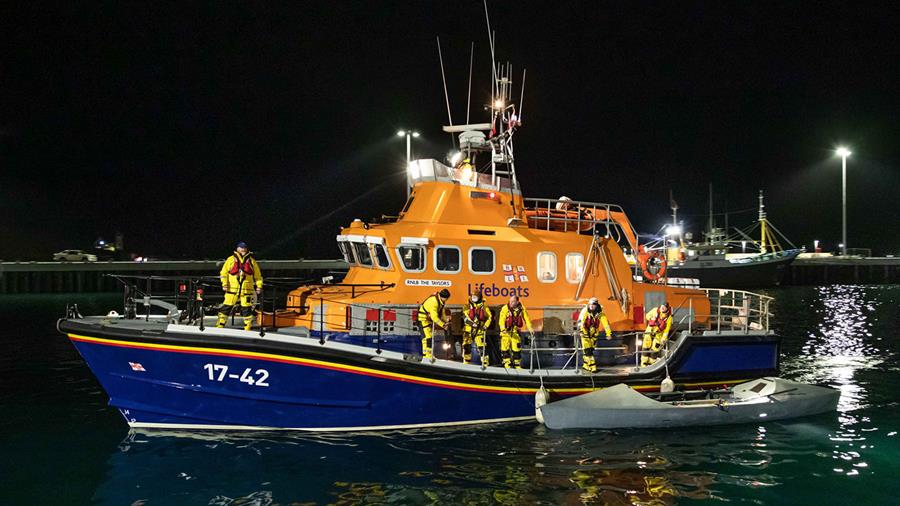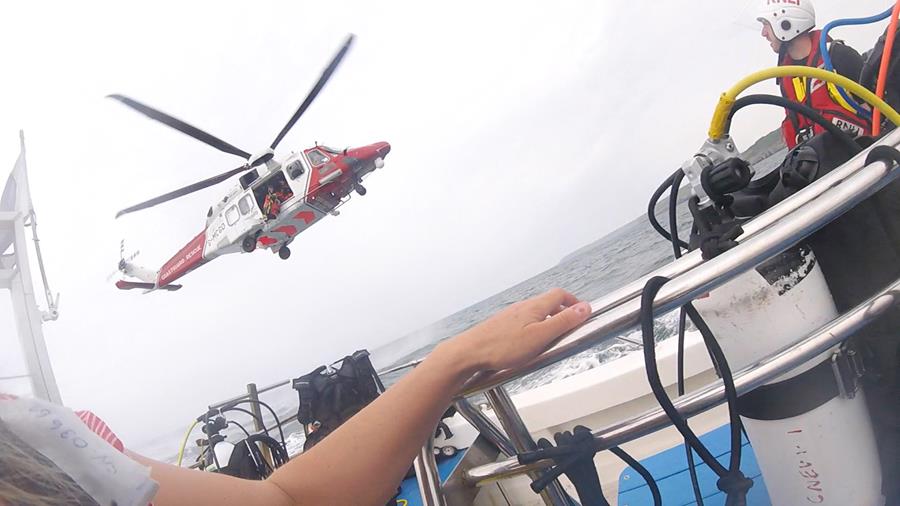
Big Sick, Little Sick: Simpler ways to treat injury and illness at sea
Lifeboat crews are made up of volunteers from many professions, from plumbers to IT technicians. Although a doctor, nurse or paramedic may join the crew occasionally, the vast majority of RNLI volunteers join with no medical training.
They’re often required to treat casualties in demanding and stressful environments – from the deck of a lifeboat in a force 9 gale to a cramped space inside a flooded home. And they need to have the knowledge and ability to assess the injury or illness and give vital first aid. It can mean the difference between life and death.
So, when it takes up to 5 years of full-time training to get doctors and paramedics to the stage where they’re able to triage, diagnose and treat casualties on-site, how could we get volunteers to a high standard - but much quicker?
Paul Savage, volunteer Crew Member at Tower Lifeboat Station and former Clinical Operations Manager at the RNLI, developed a simple and elegant solution to this problem. Drawing on his own experience and knowledge of being on the crew, he created a unique approach to casualty care for the RNLI’s 4,500 volunteers.
A focus on simplicity
Paul says: ‘As a crew member, I knew what it was like to step onto a boat and come across a situation I hadn’t seen before and feel scared, so I wanted to create a system that allowed everybody to treat casualties quickly and confidently, even in scary, new and serious situations. I wanted to remove fear and hesitation from these situations.’
With the focus on simplicity, Paul’s aim was to create a system that not only allowed every crew member to be able to treat injuries immediately, but that made sure that – even in the heat and stress of the moment – all the information they needed was immediately to hand.
Replacing the existing First Aid course, Paul’s thinking was simple: remove all of the theory, all of the big medical terms and Latin phrases and – to an extent – remove the reasoning behind a course of action: ‘As I always used to say to the crew members that were training – what difference does knowing how a heart functions on an anatomical level make to how well you can perform CPR?
‘If you’ve been called out of bed at 3am, you don’t want to be thinking about how a heart functions. You want CPR to be part of your muscle memory so you can perform lifesaving techniques quickly, even when you’re not at your sharpest.’
As part of his plan to scrap the theoretical aspect of casualty care, Paul developed a new system that focused on teaching lifeboat crew members and RNLI lifeguards the physical and practical aspects of keeping somebody alive.
‘Remembering the symptoms and correct course of action 1, 2 or 3 years after your First Aid course, in the dead of night and in a life-or-death situation, isn’t easy for a medical professional, let alone a volunteer without a medical background. That’s why it was important to come up with a system that prevented the crew members from relying on memory and medical knowledge, but gave them all of that information to hand.’
The solution: Check cards
Paul – who was awarded an OBE in 2013 – designed and produced a set of waterproof check cards that help the volunteers see the correct course of action to take. The cards allow crew members to treat a casualty quickly and correctly in the same time it would take to remember the difference between the symptoms of a broken rib and tension pneumothorax.
When it came to putting the cards together, Paul enlisted the help of Martin Wale, an RNLI Technical Author, who set to work on laying the information out in a way that was easy to digest at a glance. Using flow charts instead of large blocks of text, Martin and Paul’s system covers every aspect of injury, illness and immersion, as well as triage protocols for situations when casualties outnumber first aiders.
Paul says: ‘The fact that these cards exist is a testament to Martin’s skill and the fact that he knew his job inside out. It’s one thing for me to have imagined these cards on a theoretical level, but Martin deserves all of the praise for putting them together in a way that presents a lot of information in such a simple and easy to follow manner.’
Sadly, Martin passed away in January 2016 after a long and brave battle with cancer.
Prioritisation on the go
Paul also developed a system - Big Sick, Little Sick - to quickly decide which patients require rapid evacuation for professional medical assistance and which are less urgent.
Put simply, Big Sick means that the casualty is in serious danger and is going to die if they do not receive immediate medical attention. Little Sick can still be quite serious, but the patient is in a stable and non-critical condition.
These techniques have been widely praised for their accuracy, efficiency and simplicity, and have been adopted by other emergency services too – including local fire brigades. As Paul says: ‘It’s about equipping people with the skills and the confidence to treat casualties, whether that’s in their role as a volunteer crew member on a lifeboat or patrolling the beach as a lifeguard.
‘I am incredibly proud of all of our lifeboat crew and lifeguards – treating people in the hostile environment in which we work is incredibly difficult and they always do a very good job.'
The results
‘I’ll always remember hearing of a situation in which two very young and very new lifeguards were patrolling a beach when they came across a seriously ill child,' Paul says. 'Off of the back of the cards, they managed to treat the child and save their life.
‘The average survival rate of cardiac arrest outside of hospital in the UK is 8%. Since we’ve brought in these new cards, the RNLI has had survival rates from cardiac arrest of almost 70%. It’s very special indeed – the magic combination of training, fast response, physically fit crew members and these check cards is making a massive difference to the amount of lives the crews are able to save.’
We’d love to keep you up to date with how our crews save lives around the UK and Ireland – thanks to public support.
Categories
You may also enjoy the following








